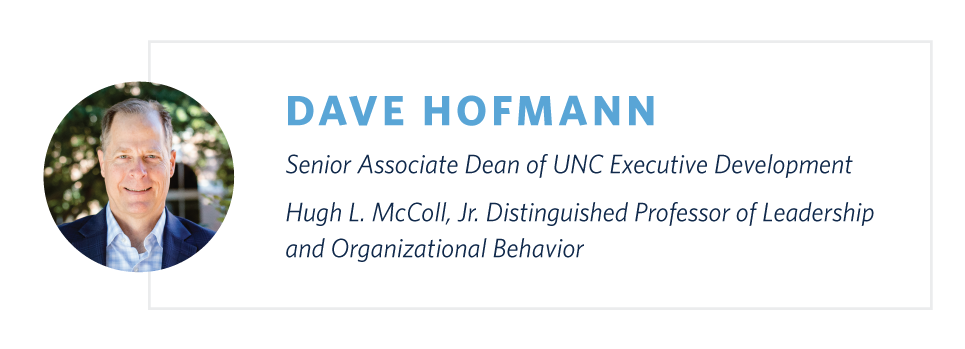Thought Leadership
Leading in the Middle

Large organizations are comprised of dynamic webs of social influence and reporting relationships. In the face of such complexity, even managers often lack a “big picture” view of how their organizations operate. The result is often a frustrated management team caught in a tug-of-war between corporate-HQ-level demands and the day-to-day needs of the division or business line.
Managers who learn to “lead in the middle” can successfully balance these competing forces and boost their careers by differentiating their leadership skills.
Tension Headache
Competing priorities stymie virtually every large organization. Centralized functions seek standardization and organizational efficiencies, while line management seeks customized, customer-focused solutions. When unresolved, these clashing forces can drain organizational morale and impede productivity.
According to Professor Dave Hofmann, the middle manager’s role is to proactively resolve these tensions by achieving balance. First, managers must accept this state of tension through awareness. Next, they must seek win-win solutions. Dave describes this two-pronged approach as “leading in the middle.”
How to Lead in the Middle
Successfully leading in the middle is about neither acquiescing to enterprise-level demands nor resolutely holding one’s position for the sake of business-line needs. Rather, it is about achieving balance by applying three steps: mindset and awareness; appreciative dialogue; and leadership.
In large organizations, managers often struggle to balance competing priorities borne of dynamic internal forces. Leading in the middle is a three-step approach that provides middle managers with clarity in setting objectives, discovering shared aims, and delivering win-win solutions. The manager who successfully leads in the middle can greatly improve harmony, vitality, productivity, and organizational performance.
If you would like to learn more about developing your leadership skills, download our full white paper, Leading in the Middle. This resource provides an in-depth discussion on the unique challenges of managing the competing priorities in large organizations and achieving balance between stakeholder groups.
DOWNLOAD LEADING IN THE MIDDLE
